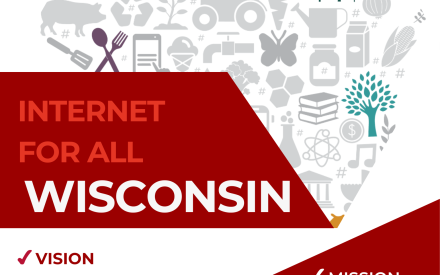Digital Inclusion
The vision of the state broadband plan is for all Wisconsinites to have the information technology capacity to fully participate in society.
A successful digital inclusion program involves having affordable broadband for all families, including low-income families. But being digitally inclusive involves more than just providing low-cost broadband. Many people do not have digital devices (desktop computers, laptops, tablets, etc.). These digital devices are necessary for connectivity to the internet. Finally, It is important that people be taught how to use these devices. Being digitally inclusive means families use technology and the internet to improve their quality of life.
Digital literacy is the step toward acquiring digital skills. A late 2017 report by the research think tank Brookings Institution entitled “Digitalization and the American Workforce” noted how a one percentage point increase in one’s digitalization score predicted an average annual wage increase of $292.80 in 2016. Digital literacy and digital skills are no longer merely fundamental to being competitive in today’s job market, rather they are an absolute necessity just to get a job in the first place. Acquiring digital skills is now a prerequisite for individuals, businesses, and regional economic success.
What is digital inclusion?
The definition and basic elements of a successful digital inclusion program are identified below by the National Digital Inclusion Alliance.
Digital inclusion refers to the activities necessary to ensure that all individuals and communities, including the most disadvantaged, have access to and use information and communication technologies (ICTs). This includes the following five elements:
- Affordable, robust broadband internet service
- Internet-enabled devices that meet the needs of the user
- Access to digital literacy training
- Quality technical support and
- Applications and online content designed to enable and encourage self-sufficiency, participation, and collaboration.















